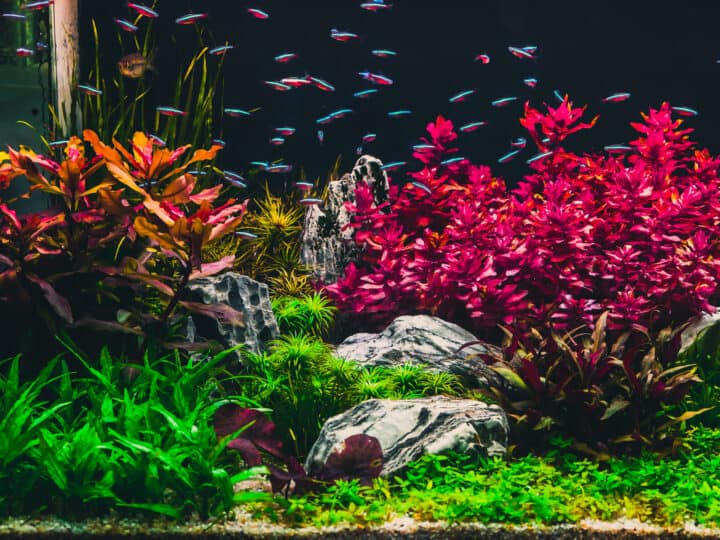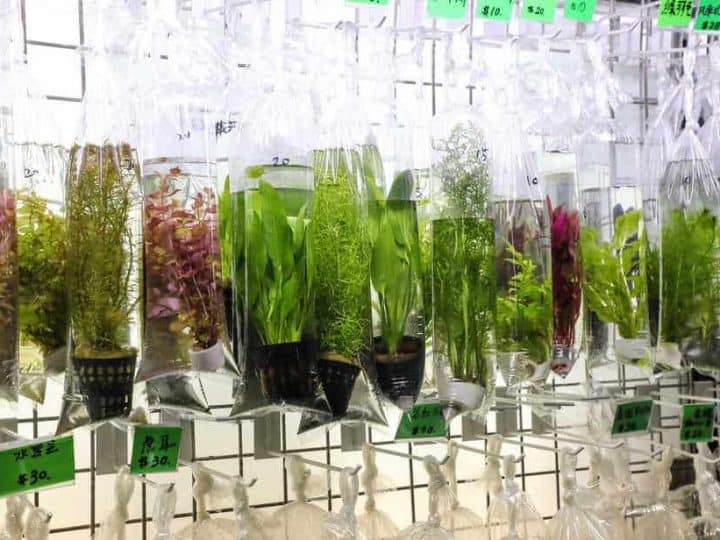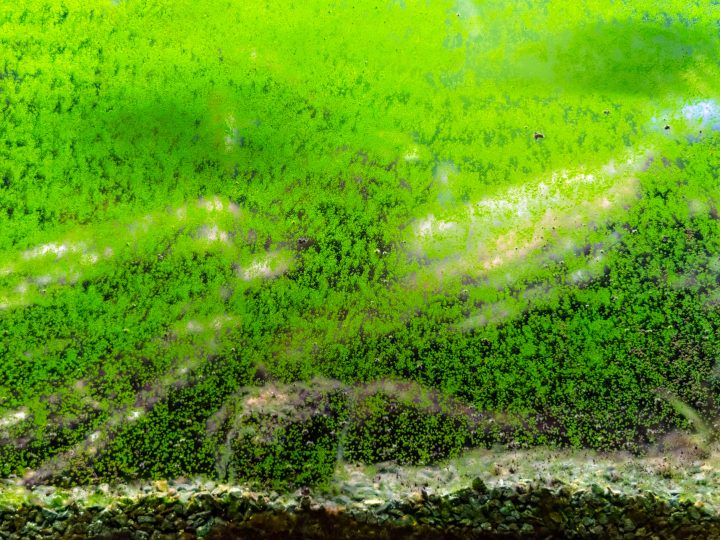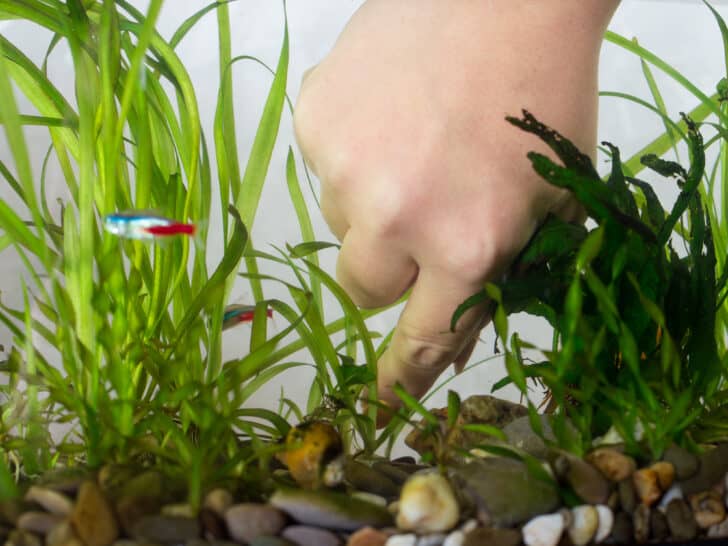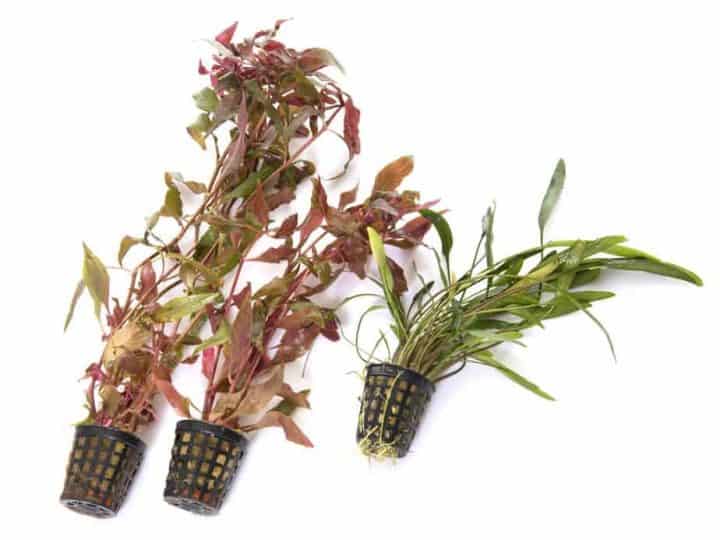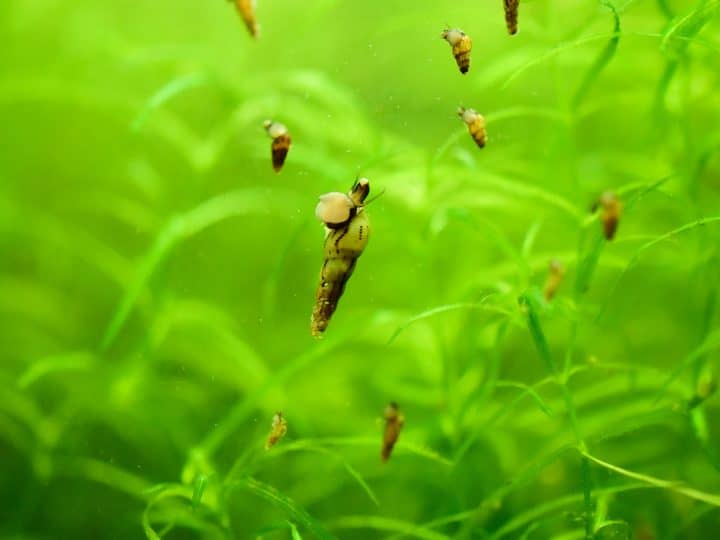Starting with live plants was a big step for me when I started. There were so many questions, and one of them was when to add them. I wasn’t sure, especially because you have to wait a couple of weeks before adding your fish. Therefore I looked around and asked a couple of experienced fish keepers.
Quick Answer
You can add live plants at any point. When you are setting up your aquarium, you can add plants directly after you added the water. If there is a substrate, the water will still be cloudy. In established tanks, you are free to add plants whenever.
In this article I will teach you everything you need to know about the effect of live plants and various aquatic plant species on the aquarium cycle.
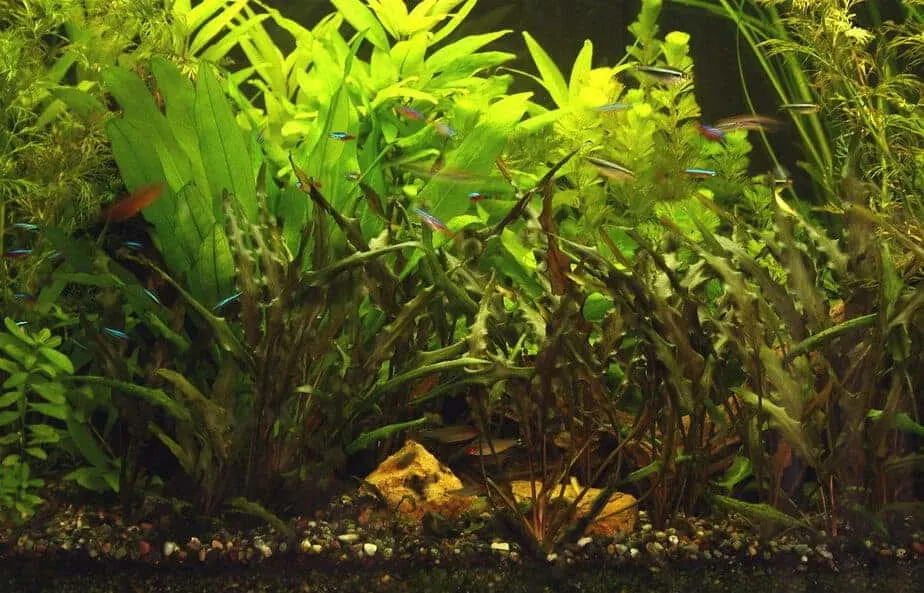
Adding Plants When Setting Up a New Aquarium
Whenever you set up a new aquarium, you need to let it cycle before you add fish. What this means is that the aquarium needs to grow a colony of beneficial bacteria that allow the aquarium to break down the toxic ammonia into the way less toxic nitrate.
These bacteria take about 6 weeks to establish into your filter, gravel and pretty much all other things in your aquarium. But mostly in your filter.
If you were unaware of the nitrogen cycle, and you want to know when and if your aquarium is properly cycled, check out this guide that will teach you just that.
The beneficial bacteria only grow when there is a little bit of ammonia in the tank. This is because they feed on it. Just like when there would be fish in the aquarium that poop and therefore produce ammonia.
Now there are different ways to add ammonia during the cycle stage. I always add a little bit of fish food that will start to rot and produce the ammonia I need.
And next to that, I immediately add live plant to the tank.
Because live plants always need some time to establish themselves in a new tank (new water, new light, new parameters), most of the time they will ‘melt’ a little. This means that they will drop a couple of leaves before replacing them with new growth.
And that helps start our nitrogen cycle, because those leaves and other organic material the live plants add to the water are good source for some extra ammonia. It sort off jump starts the cycle.
Remember that this does not mean that your cycle is done in a couple of days, you still need to wait for about 6 weeks before your aquarium is ready to handle fish.
Tip: do not add many fish at once. Instead, start slowly with just a couple of fish and buy more later. This is to make sure your tank does not get overloaded.
Looking for more information on aquarium plants?
In that case, make sure to check out our aquatic plants landing page. There you’ll find everything you need to make your plants THRIVE in your aquarium!
Some Constraints
So you can add plants from the start. But there are just a few things you should keep in mind.
First the obvious one, you need to have some form of aquarium light present. This is because live plants need light to grow and will die without it. Now there are low to medium light plants like Anubias and Java Fern, whereas other plants might need medium – high light intensity. Therefore always do a little bit of research on the plant you are adding.
The second thing is something that might adding live plants right from the start a little bit challenging. At least in my experience. When I was setting up my aquarium the substrate I added made the entire tank cloudy. I could not see a thing, a usual problem with sand and other such substrates! .
This was so annoying because I could not see what I was doing when I was trying to position my plants at the right place.
Finally, make sure you immediately add a good quality all-in-one liquid fertilizer such as Seachem Flourish, which is available here on Amazon. The reason for this because a new aquarium does not contain any nutrients for your plants to grow. You can’t expect plants that you add to a near-sterile environment to grow. Therefore, get plant fertilizer, it will help a lot, especially for heavy root feeders!
Adding Plants to an Already Established Aquarium
Whenever your aquarium is already established, you can add plant whenever you want. I can imagine you might be looking for a ‘best time’ to add plants. If I would have to pick one I would say a couple of hours before the light turns off or during low light conditions.
When you want to add plants to an established tank the water parameters of your aquarium are not exactly the same as in the store you bought them from. There will always be a difference. Just like fish, plants need to adjust to new water parameters and require specific water conditions.
This shift in water parameters is also the reason why so many plants look like they are dying when they have been in our own aquarium for a couple of days/weeks. This is called ‘melting’ and is a way for the plant to adjust. Cryptocoryne plants are especially notorious for melting.
Just know that the plant is not dead and it should be just a while before you start seeing new growth, especially if you treated your tap water properly before using it!
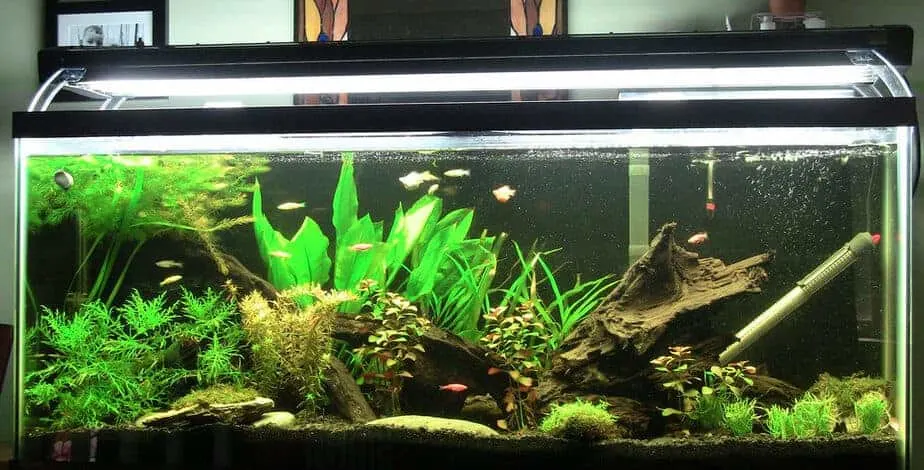
Plants Might ‘Die’ After Adding Due to Emersed Growth
The reason a lot of live plants ‘melt’ after adding them to your aquarium is because they were grown “emersed” which means partly under water, something that most beginners are unaware of. Most of the times only the roots and soil was under water, and the stems and leaves of the plant were exposed to air.
Now there are pros and cons to emersed growth compared to submerged (immersed) growth. It is way cheaper for the nursery to grow the plants emersed. There also are no algae on the plants and when exposed to air have all the CO2 they need.
The cons of emersed growth are the fact that the plants will die down when you start to grow them in your aquarium. The leaf structure will completely change. I have had plants changing in color, shape and structure when they were regrowing.
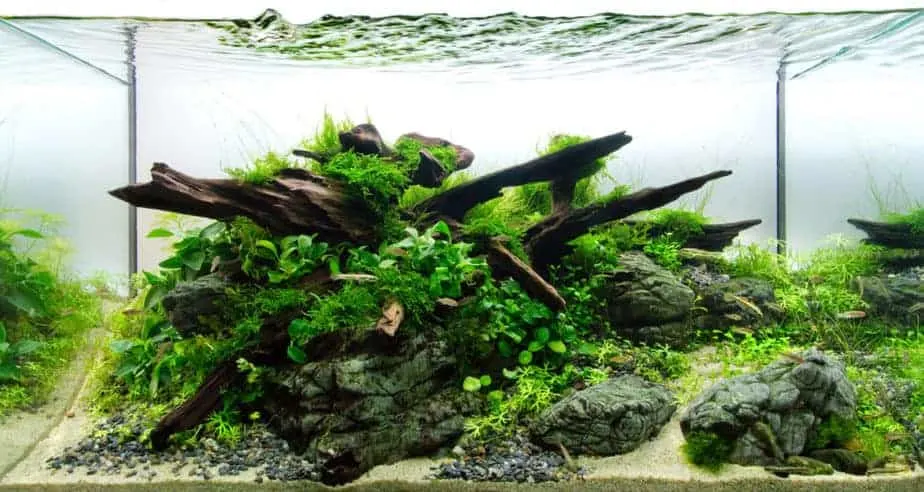
Preparing Live Plants Before Adding Them to the Aquarium
When you are going to add some plants to your aquarium, I have made it a habit to give the plants a good and thorough rinse under the tap. I always do this to rinse of any snails and snail eggs that I do not want to have in my aquarium.
Whether we are talking about the Amazon sword, java moss, vallisneria, or any other aquatic plants found in a planted tank, rinsing them off first is essential to the wellbeing of your aquarium.
I recommend you do the same. I have had a snail infestation in the past and solved it by introducing helena “assassin” snails that hunt down all the tiny pest snails.
Also, I recommend you try and get the most out of the plants that you buy in pet stores. Some plants you can split into multiple smaller plants to spread them out more equal. Here is what I mean:
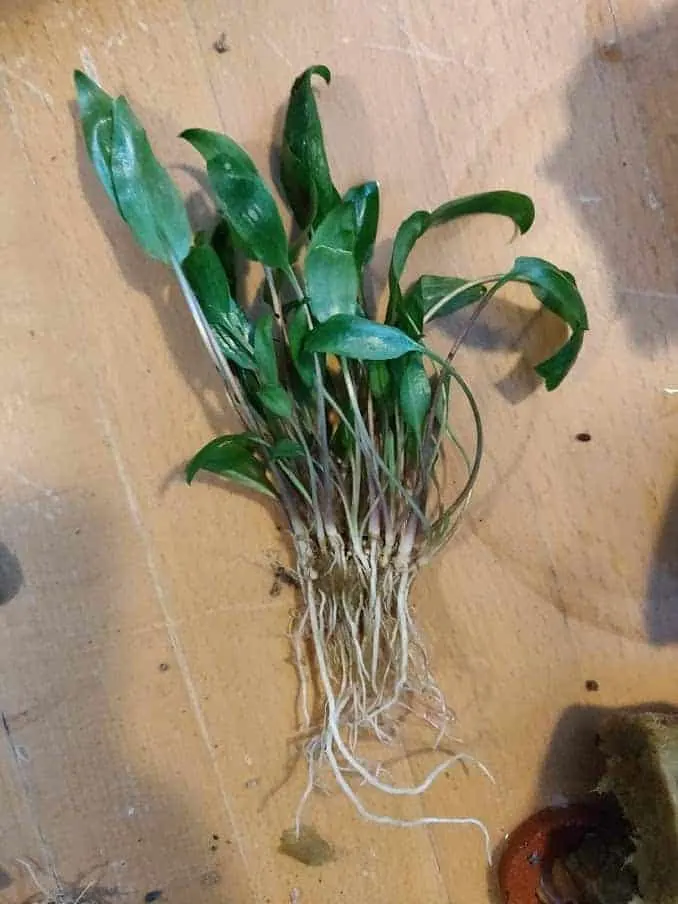
This plant you can easily pull apart into about 3 bunches on plants.
My favorite fishtank products that make life easier
I am so happy you enjoy this post so far! You will also definitely like my product recommendations that will make your fishkeeping experience so much better. I’m 100% sure you’ll love them!
- Without a gravel vacuum, like one from Aqueon, cleaning the substrate of your tanks is near impossible. Whenever I want to remove some of the sunken detritus from the bottom of my acrylic tanks I’m happy I’ve got one of these.
- It’s no secret that I do not like nutritious aqua-soil. It makes a mess and only works for a given amount of time. Instead, I always use a liquid aquarium plant fertilizer. Everyone who keeps live plants needs it, it’s not that expensive and makes your plants grow better.
- I love keeping plants, but planting and reorganizing my aquarium was difficult until I got a set of these tools. It’s much easier to plant any kind of plant compared to using my thick fingers.
- Ever since I’m able to accurately test my water parameters, including the pH level, keeping fish became less stressful. Before I was always stressed that my water parameters were wrong, but with a kit such as the API Master kit, I can measure this. It really is essential to successful fishkeeping.
- The more you know about your aquarium, the better! Temperature is crucial for the health of your fish. A thermometer will also show you whether your heaters are still working correctly. It will give you more insight and more peace of mind. It’s an easy way to ensure that you’re providing your fish with the tropical temperatures they need.
References:
Feature image – Author: The Wandering Angel Licensed under: Some rights reserved No changes
Aquarium 1 image – Author: Pete Brown Licensed by CC2.0 Cropped
Aquarium 2 image – Author: Local River Licensed under: CC3.0 No changes made

